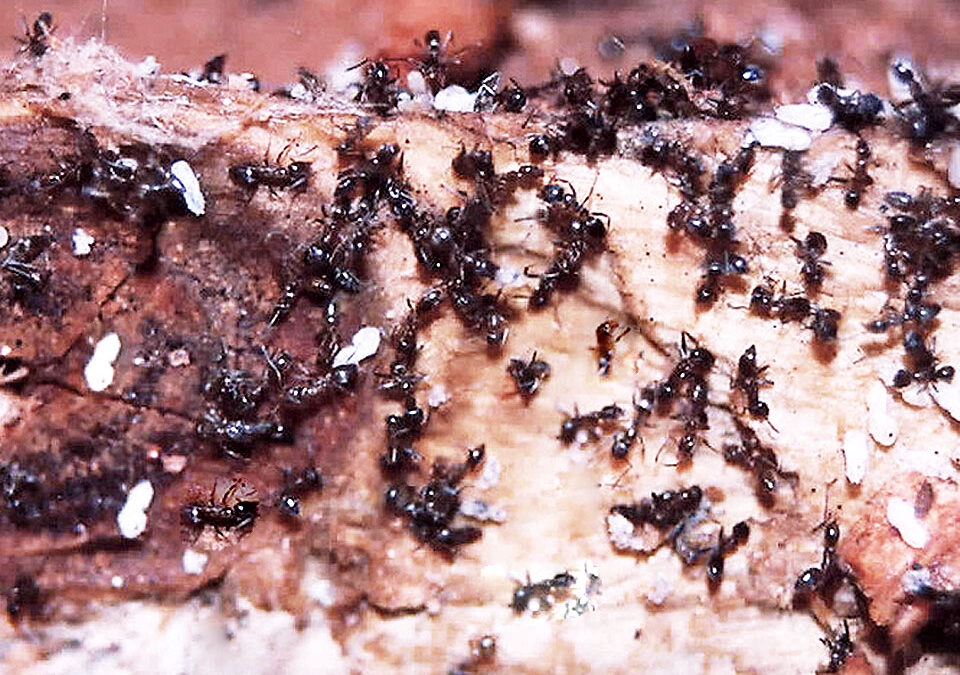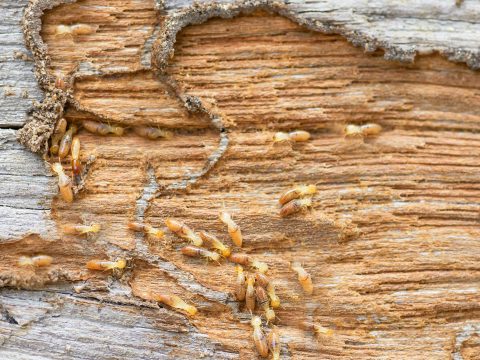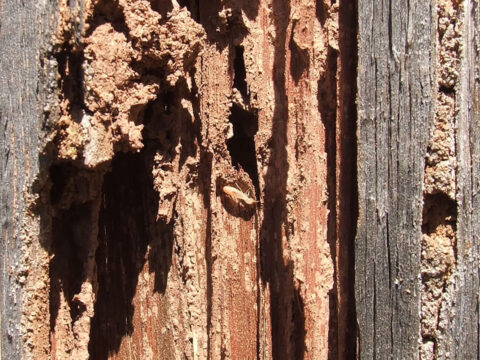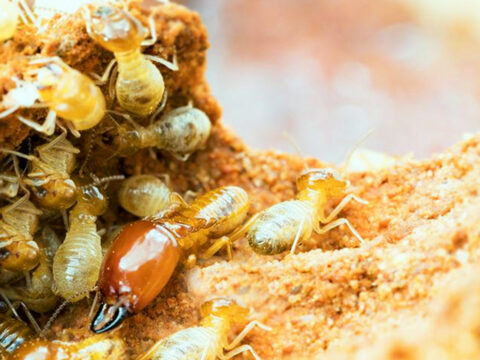
Are Termites The Same As Ants?
January 15, 2024
How Do Termites Communicate With Each Other?
March 28, 2024In the warm and sunny climate of southern California, homeowners and property managers face a persistent threat lurking beneath the surface – termites!
These tiny but formidable pests can wreak havoc on structures, causing costly damage and headaches for those unlucky enough to encounter them. However, in the struggle to fend off these silent invaders, there may be allies hiding in plain sight: natural predators.
Termites, often perceived as destructive and unstoppable insects, have their own set of natural predators in the wild. Various creatures have developed strategies to hunt, consume, and even control termite populations. But can natural predators truly make a difference in termite control efforts?
Join us as we uncover the identities of termite predators native to the Golden State, and evaluate their effectiveness as allies in the ongoing battle against termites.
Termites do have natural predators that can help in controlling termite populations. Some of them include:
Ants: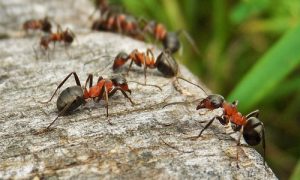
Ants are among the most common natural predators of termites. They are known to raid termite colonies, feed on termites, and sometimes even compete with termites for resources.
In southern California, several ant species are known to prey on termites:
– Argentine ant
This invasive ant species is prevalent in southern California. While their primary diet consists of sweet substances like honeydew from aphids, Argentine ants are opportunistic feeders and will happily consume termites when given the chance. They may not specialize in preying on termites but can contribute to controlling termite populations.
– Red imported fire ant
Fire ants have been reported in some areas of southern California. They are aggressive predators and may attack termite colonies, especially if they come into direct competition for resources or nesting sites.
– Carpenter ants
Carpenter ants are native to California and are known for their ability to excavate wood to build their nests. While they primarily feed on honeydew, insects, and other small arthropods, they have been observed preying on termites. Carpenter ants can play a role in controlling termite populations, particularly if their nests are located near termite colonies.
– Pavement ants
Pavement ants are commonly found in urban areas of southern California. While they primarily scavenge for food and compete with other ant species, they may also prey on termites when the opportunity arises.
It’s important to note that while ants can help control termite populations to some extent, they are not typically considered reliable or effective as the sole method of termite control, especially for huge infestations.
Predatory Insects: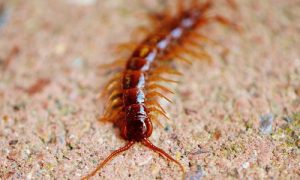
Predatory insects can be effective natural enemies of termites, helping to control their populations. While their impact may vary depending on factors such as habitat and termite species, some predatory insects commonly prey on termites.
In southern California, several predatory insects can help control termite populations:
– Assassin bugs
These are predatory insects known for their voracious appetite for other insects. They are capable of capturing and feeding on various prey, including termites. Assassin bugs can be found in diverse habitats throughout southern California.
– Ground beetles
These diverse predatory insects live in various ecosystems, including urban and agricultural landscapes in southern California. While they primarily feed on small invertebrates and insect larvae, some ground beetle species may opportunistically prey on termites when encountered.
– Praying mantises
They are known for their predatory behavior, and while they primarily feed on other insects like flies or moths, they may also prey on termites if they encounter them. Mantises are found in a variety of habitats in southern California, including gardens, parks, and natural areas.
– Centipedes
Although centipedes primarily feed on other arthropods, including insects and spiders, some species may also prey on termites. Centipedes are typically found in moist environments throughout southern California.
– Lacewings
These are predatory insects commonly found in diverse habitats, including agricultural and urban landscapes in southern California. While lacewing larvae are voracious predators of aphids and other small insects, adult lacewings may also consume termites when encountered.
These predatory insects, among others, can contribute to the natural control of termite populations. While they may not completely eradicate termite infestations, maintaining healthy populations of predatory insects can help suppress termite numbers and reduce the likelihood of severe damage to structures.
Birds: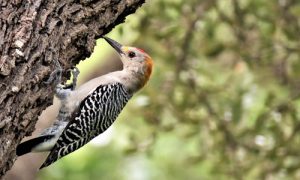
Birds are another group of natural predators that can help control termite populations, although to a lesser extent compared to insects and other animals.
In southern California, various bird species can consume termites as part of their diet, which may help control termite populations, such as:
– Woodpeckers
These birds are well-known for their ability to excavate wood in search of insects hidden inside. While woodpeckers primarily feed on wood-boring beetles, they may also consume termites when available.
– Starlings
European starlings are opportunistic feeders known to consume a wide variety of food items. While they primarily feed on fruits, seeds, and insects found on the ground, starlings may also consume termites when encountered.
– Swallows
While they primarily feed on flying insects such as flies, mosquitoes, and beetles, swallows may also consume termites when swarming or flying in the vicinity of termite colonies.
– Crows and Ravens
These are intelligent birds known to exploit a wide range of food sources, including insects, fruits, seeds, and carrion. While they are not specialized termite predators, crows and ravens may opportunistically consume termites when foraging for food.
Reptiles and amphibians: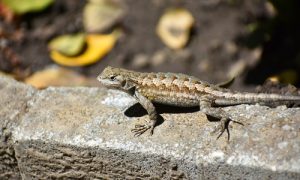
Reptiles and amphibians can also play a role in controlling termite populations, although their impact may be more limited compared to other natural predators like ants.
In southern California, various reptile and amphibian species may consume termites as part of their diet. Some of these species include:
– Western Fence lizard
They are common reptiles found in a variety of habitats throughout southern California, including grasslands and suburban areas. While Western fence lizards primarily feed on small insects such as ants and beetles, they may also consume termites opportunistically when encountered.
– Western toad
Western toads are amphibians commonly found in moist habitats like woodlands or grasslands in southern California. While their diet consists mainly of insects such as beetles, flies, and ants, they may also consume termites when available.
– Gopher snake
They are non-venomous snakes found in a variety of habitats, such as grasslands, throughout southern California. While they primarily feed on rodents like mice and gophers, they may also consume termites if encountered while foraging.
– Western skink
Western skinks are small lizards commonly found in a variety of habitats, including grasslands and urban areas, throughout southern California. While their diet primarily consists of insects such as beetles, spiders, and grasshoppers, they may also consume termites when available.
– Pacific treefrog
These small amphibians are commonly found in a variety of habitats, including woodlands, marshes, and suburban areas of southern California. While they primarily feed on small insects such as flies and beetles, they may also consume termites opportunistically.
While birds, reptiles, and amphibians may contribute to the natural control of termite populations, their impact may be limited compared to other predators such as ants and predatory insects. Additionally, the effectiveness of birds, reptiles, and amphibians in controlling termite infestations can vary and depends on factors such as habitat, species abundance, and termite species.
In general, predators alone may not provide sufficient protection against large-scale infestations or structural damage caused by termites. As such, home and business owners should remain vigilant and proactive in their pest management strategies.
When facing a termite infestation, seeking the expertise of a professional pest control company like Chem Free Exterminating in Orange County, California is paramount.
Our trained technicians have the knowledge, tools, and experience necessary to accurately assess the extent of the infestation and implement effective eradication and prevention measures.
So contact us today to ensure thorough and lasting protection against termites, and safeguard your investment and peace of mind.

